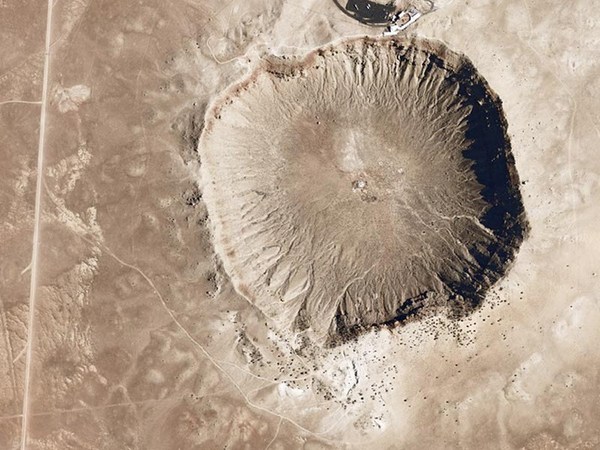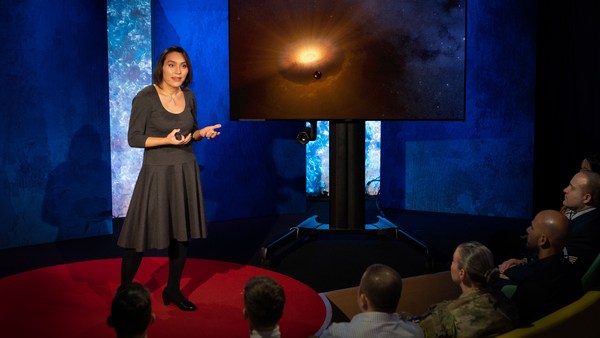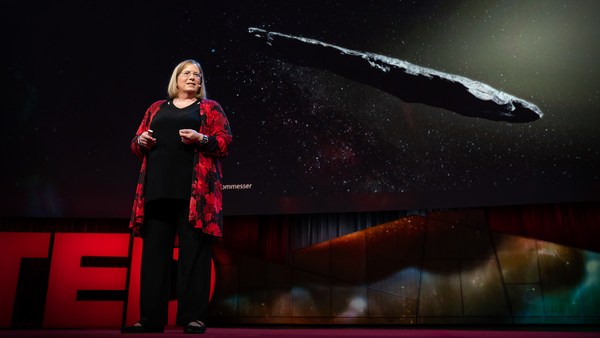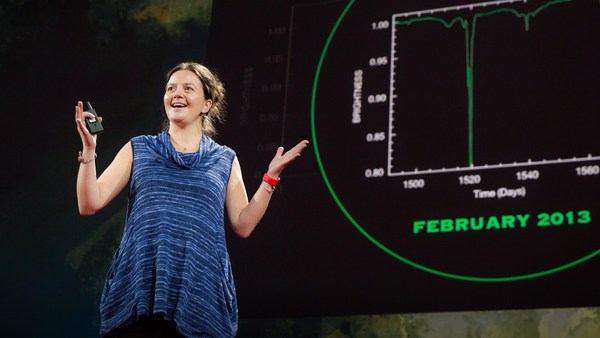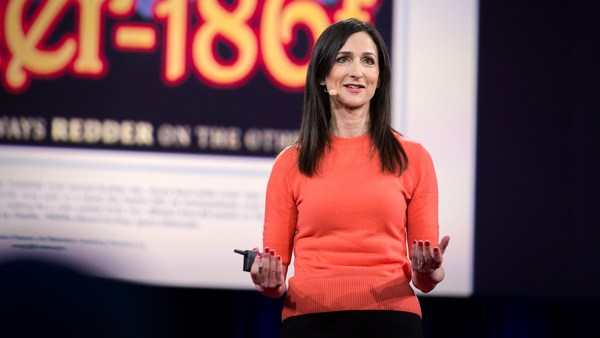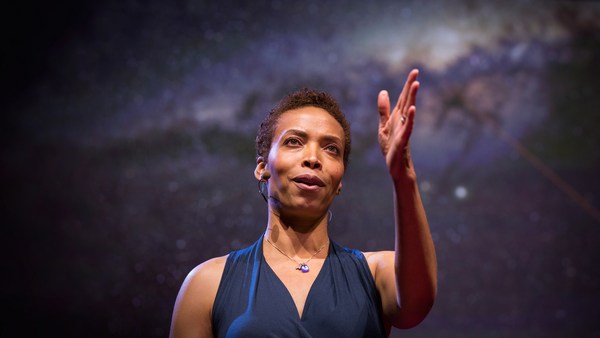Now, people have a lot of misconceptions about science -- about how it works and what it is. A big one is that science is just a big old pile of facts. But that's not true -- that's not even the goal of science. Science is a process. It's a way of thinking. Gathering facts is just a piece of it, but it's not the goal. The ultimate goal of science is to understand objective reality the best way we know how, and that's based on evidence.
The problem here is that people are flawed. We can be fooled -- we're really good at fooling ourselves. And so baked into this process is a way of minimizing our own bias. So sort of boiled down more than is probably useful, here's how this works. If you want to do some science, what you want to do is you want to observe something ... say, "The sky is blue. Hey, I wonder why?" You question it. The next thing you do is you come up with an idea that may explain it: a hypothesis. Well, you know what? Oceans are blue. Maybe the sky is reflecting the colors from the ocean. Great, but now you have to test it so you predict what that might mean. Your prediction would be, "Well, if the sky is reflecting the ocean color, it will be bluer on the coasts than it will be in the middle of the country." OK, that's fair enough, but you've got to test that prediction so you get on a plane, you leave Denver on a nice gray day, you fly to LA, you look up and the sky is gloriously blue. Hooray, your thesis is proven. But is it really? No. You've made one observation. You need to think about your hypothesis, think about how to test it and do more than just one. Maybe you could go to a different part of the country or a different part of the year and see what the weather's like then. Another good idea is to talk to other people. They have different ideas, different perspectives, and they can help you. This is what we call peer review. And in fact that will probably also save you a lot of money and a lot of time, flying coast-to-coast just to check the weather.
Now, what happens if your hypothesis does a decent job but not a perfect job? Well, that's OK, because what you can do is you can modify it a little bit and then go through this whole process again -- make predictions, test them -- and as you do that over and over again, you will hone this idea. And if it gets good enough, it may be accepted by the scientific community, at least provisionally, as a good explanation of what's going on, at least until a better idea or some contradictory evidence comes along.
Now, part of this process is admitting when you're wrong. And that can be really, really hard. Science has its strengths and weaknesses and they depend on this. One of the strengths of science is that it's done by people, and it's proven itself to do a really good job. We understand the universe pretty well because of science. One of science's weaknesses is that it's done by people, and we bring a lot of baggage along with us when we investigate things. We are egotistical, we are stubborn, we're superstitious, we're tribal, we're humans -- these are all human traits and scientists are humans. And so we have to be aware of that when we're studying science and when we're trying to develop our theses. But part of this whole thing, part of this scientific process, part of the scientific method, is admitting when you're wrong. I know, I've been there.
Many years ago I was working on Hubble Space Telescope, and a scientist I worked with came to me with some data, and he said, "I think there may be a picture of a planet orbiting another star in this data." We had not had any pictures taken of planets orbiting other stars yet, so if this were true, then this would be the first one and we would be the ones who found it. That's a big deal. I was very excited, so I just dug right into this data. I spent a long time trying to figure out if this thing were a planet or not. The problem is planets are faint and stars are bright, so trying to get the signal out of this data was like trying to hear a whisper in a heavy metal concert -- it was really hard. I tried everything I could, but after a month of working on this, I came to a realization ... couldn't do it. I had to give up. And I had to tell this other scientist, "The data's too messy. We can't say whether this is a planet or not." And that was hard. Then later on we got follow-up observations with Hubble, and it showed that it wasn't a planet. It was a background star or galaxy, something like that.
Well, not to get too technical, but that sucked.
(Laughter)
I was really unhappy about this. But that's part of it. You have to say, "Look, you know, we can't do this with the data we have." And then I had to face up to the fact that even the follow-up data showed we were wrong. Emotionally I was pretty unhappy. But if a scientist is doing their job correctly, being wrong is not so bad because that means there's still more stuff out there -- more things to figure out.
Scientists don't love being wrong but we love puzzles, and the universe is the biggest puzzle of them all. Now having said that, if you have a piece and it doesn't fit no matter how you move it, jamming it in harder isn't going to help. There's going to be a time when you have to let go of your idea if you want to understand the bigger picture. The price of doing science is admitting when you're wrong, but the payoff is the best there is: knowledge and understanding. And I can give you a thousand examples of this in science, but there's one I really like. It has to do with astronomy, and it was a question that had been plaguing astronomers literally for centuries.
When you look at the Sun, it seems special. It is the brightest object in the sky, but having studied astronomy, physics, chemistry, thermodynamics for centuries, we learned something very important about it. It's not that special. It's a star just like millions of other stars. But that raises an interesting question. If the Sun is a star and the Sun has planets, do these other stars have planets? Well, like I said with my own failure in the "planet" I was looking for, finding them is super hard, but scientists tend to be pretty clever people and they used a lot of different techniques and started observing stars. And over the decades they started finding some things that were pretty interesting, right on the thin, hairy edge of what they were able to detect. But time and again, it was shown to be wrong.
That all changed in 1991. A couple of astronomers -- Alexander Lyne -- Andrew Lyne, pardon me -- and Matthew Bailes, had a huge announcement. They had found a planet orbiting another star. And not just any star, but a pulsar, and this is the remnant of a star that has previously exploded. It's blasting out radiation. This is the last place in the universe you would expect to find a planet, but they had very methodically looked at this pulsar, and they detected the gravitational tug of this planet as it orbited the pulsar. It looked really good. The first planet orbiting another star had been found ... except not so much.
(Laughter)
After they made the announcement, a bunch of other astronomers commented on it, and so they went back and looked at their data and realized they had made a very embarrassing mistake. They had not accounted for some very subtle characteristics of the Earth's motion around the Sun, which affected how they measured this planet going around the pulsar. And it turns out that when they did account for it correctly, poof -- their planet disappeared. It wasn't real.
So Andrew Lyne had a very formidable task. He had to admit this. So in 1992 at the American Astronomical Society meeting, which is one of the largest gatherings of astronomers on the planet, he stood up and announced that he had made a mistake and that the planet did not exist. And what happened next -- oh, I love this -- what happened next was wonderful. He got an ovation. The astronomers weren't angry at him; they didn't want to chastise him. They praised him for his honesty and his integrity. I love that! Scientists are people.
(Laughter)
And it gets better!
(Laughter)
Lyne steps off the podium. The next guy to come up is a man named Aleksander Wolszczan He takes the microphone and says, "Yeah, so Lyne's team didn't find a pulsar planet, but my team found not just one but two planets orbiting a different pulsar. We knew about the problem that Lyne had, we checked for it, and yeah, ours are real." And it turns out he was right. And in fact, a few months later, they found a third planet orbiting this pulsar and it was the first exoplanet system ever found -- what we call alien worlds -- exoplanets. That to me is just wonderful.
At that point the floodgates were opened. In 1995 a planet was found around a star more like the Sun, and then we found another and another. This is an image of an actual planet orbiting an actual star. We kept getting better at it. We started finding them by the bucketload. We started finding thousands of them. We built observatories specifically designed to look for them. And now we know of thousands of them. We even know of planetary systems.
That is actual data, animated, showing four planets orbiting another star. This is incredible. Think about that. For all of human history, you could count all the known planets in the universe on two hands -- nine -- eight? Nine? Eight -- eight.
(Laughter)
Eh.
(Laughter)
But now we know they're everywhere. Every star -- for every star you see in the sky there could be three, five, ten planets. The sky is filled with them. We think that planets may outnumber stars in the galaxy. This is a profound statement, and it was made because of science. And it wasn't made just because of science and the observatories and the data; it was made because of the scientists who built the observatories, who took the data, who made the mistakes and admitted them and then let other scientists build on their mistakes so that they could do what they do and figure out where our place is in the universe. That is how you find the truth. Science is at its best when it dares to be human.
Thank you.
(Applause and cheers)
